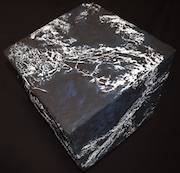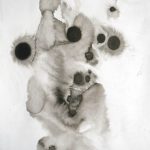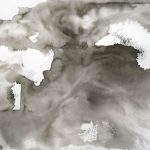Interview September 27, 2016 with Justin Labrecque of Sequential (Dave Smith Instruments) regarding work with their synthesizers
1. What made you choose the Prophet 12?
It was an easy choice for several reasons, not least of which – it has a bit of me inside it. My relationship with Dave Smith and Sequential goes way back to 1980 when I got my first Prophet 5. It became my primary keyboard synth for decades. My recent connection to the Prophet 12 actually goes a bit deeper, because DSI asked me to create some oscillator wavetables for it while it was in development. Some of those wavetables are from my own voice, so if you play the “Ahh” wave at middle E it sounds quite a bit like me. There’s also the micro-tuning feature. Years ago, I promised Dave that I would buy any synth he produced that supported alternate tuning tables, as just intonation is a basic part of my music. I finally got my wish with the P12 so I upheld my end of the bargain; and I also provided the 16 microtuning tables for it.
During this development period, when I had a prototype P12 in my studio for a couple weeks, I got a chance to dig deeply into the architecture, and came to realize that the flexible modulation matrix opens up an almost modular-synth style of sound design. While some people prefer analog for the immediate knob-turning, I enjoy diving deep into cross-modulation and chaotic complexity to find sounds I haven’t heard before. The P12 has the depth to encourage and reward those explorations. It also has the immediacy of all those knobs, so once I establish an environment within a patch, I can explore it with all the immediacy and intuition that analog offers.
2. How are you using it?
In the studio, it’s on the front lines for sound design. I explore the modulation to the extremes, recording the audio while I experiment with knobs and touch pads as I would on a modular synth, looking for surprises that might be right at the edge of chaos. The feedback feature in combination with the four delays unlocks a whole world of edgy adventure, especially as filter resonance and delay times can be simultaneously modulated by the pads and aftertouch. The linear FM additions in the recent operating system offer yet a different new realm of harmonic experiments, as the oscillators in the P12 exist in a much more fluid and immediate realm of possibilities than we had in the fussy old days of DX7.
In a live performance setting, especially when I’m traveling by air, I have been able to use the Prophet 12 to replace modular synths. I love the flexibility of a modular system, but I hate the thought of lugging one through security at the airport. I have a little high-density Eurorack rig that lets me overlap four individual parts with triggerable Midi loops coming off the laptop. When I travel long distance I can ask the organizers to provide a P12, and I load my presets into it when I arrive. With keyboard splits I can get sequencer arpeggios happening on the top end with full front panel tweakability, while using the bottom for deep drones and floating chords. Then, if I want to stretch out into the surreal I have my complex modulation sounds at the push of a button. It’s as flexible as a modular but a lot more portable.
3. What’s one of your favorite things about it?
I’ll name three: 1) 48 flexible oscillators, 2) powerfully deep modulation, 3) microtuning ability
4. What does it give you that other synths might not?
The ability to push a sound right over the edge. It doesn’t put many restraints on the range of radical mangling a sound can undergo. So, yes, sometimes this means you have to keep track of internal gain structure within a patch, because things can get really extreme. I would much rather have this challenge of extremity than to keep running up against barriers in parameter ranges because some designer thought it might “sound bad.” Sometimes I find the most magical sounds when I am hovering at the precipice, right at the brink of insanity.
5. Any interesting Prophet 12 tricks or techniques you’d like to share?
Here’s one: Investigate the tuning tables and integrate them into your sound design. For example, the first tuning table above 12-ET is the harmonic series from 1-60. This is a non-octave repeating tuning, it gets much closer near the top of the keyboard. All of the pitches represent harmonics of the lowest note on the P12 keyboard. That low C is tuned to an A-55 (3 octaves below A-440). If you start experimenting with pure tones, like a sine wave with medium attack and release, swipe your hands across the keyboard and you will hear overtones droning with a fundamental of A. This alone can be the starting point for a wide vocabulary of intense sound design, because the tuning itself becomes a part of the timbral component of the sound.
Here’s another: Ghostly feedback. Start with a sound you like – maybe a string sound or pad. Route some slow LFOs (or the two additional envelopes, in loop mode) over to the delay times of the four built-in delays. Set the delay times to a middle position so they can get shorter or longer when the modulations change them. Put delay amount to the high-middle, and delay repeats to a low number. Now, use the global feedback knob, next to the delay section, in close relationship to the filter resonance knob. In no time you will discover the crazy fringe of sound design that feedback opens up. Just keep your speakers turned low, and keep the levels low throughout the internal signal flow of the patch, because feedback will kick it up through the ceiling if you aren’t careful.
This last point brings up some advice for those who feel that the P12 has a challenging gain structure. It’s true, you can create patches that distort because of internal clipping. This simply derives from the enormous dynamic range that comes from 12 voices with four oscillators each, 12 fully resonant OTA filters and processors that allow feedback. Don’t be afraid to turn down the outputs of the oscillators, then use the layer volume and master gain knob to make back the loudness. You can go through your patches and turn the layer volumes down so they match each other better, which then offers some headroom when you need to make up gain for a patch that uses strong internal resonances and might be prone to clipping. It’s a bit like managing gain structure on a mixing board to maximize headroom.






You must be logged in to post a comment.